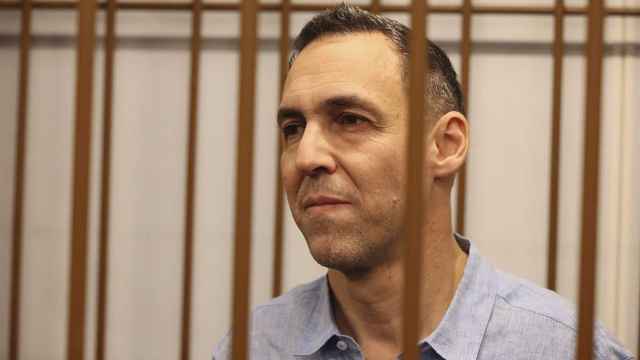The European Space Agency has received the first signal from Fobos-Grunt since it got stuck in Earth’s orbit two weeks ago, officials said Wednesday, raising hope that the mission might be saved.
Russia’s Federal Space Agency said an ESA tracking facility in Australia got the signal from the unmanned spacecraft early Wednesday in the western city of Perth.
The ESA’s flight dynamics technicians, who calculate the orbits, and the operational center staff, who actually send up the signal, had been helping in attempting to communicate with the Russian probe for the past 10 days, said Bernhard von Weyhe, a spokesman for ESA, based at its operational headquarters in Darmstadt, Germany.
The Federal Space Agency said in a statement that Russian and European space experts will coordinate further attempts to contact the probe.
Weyhe said the next try would occur later Wednesday when the spacecraft is expected to pass over the satellite dishes in Australia.
Weyhe said technicians in Perth used a little side antenna rigged with a cone to send up a wide, but weak, signal — only 3 watts — to the probe.
The strength resembled a signal that would be used to communicate with the craft once it reaches deep space, which is what it was programmed for.
“We did it as if the probe were on Mars, not only 200 to 340 kilometers away from Earth,” Weyhe said.
The $170 million craft became stranded in orbit after its thrusters failed to fire following the Nov. 9 launch to send it on its path to the Martian moon Phobos.
The initial contact raised hopes of preventing the probe from crashing back to Earth.
Weyhe said the contact could be the first step in restabilizing the mission, but underlined that the ESA is only offering support to the Russians, who would decide the mission’s future.
“It’s up to the Russians to say what they will do,” Weyhe said.
The Federal Space Agency’s deputy chief, Vitaly Davydov, said Tuesday that space experts will keep trying until the end of the month to fix the probe and steer it to its designated flight path.
If they fail, the craft could plummet to Earth some time between late December and late February, he warned,.
He added that the site of the crash cannot be established more than a day in advance.
The spacecraft weighs 13.2 tons with a highly toxic rocket fuel accounting for most of its weight.There have been concerns the fuel could freeze and spill on impact, although most experts believe that it will likely stay liquid and burn up on re-entry.
A NASA analyst said earlier that debris from Fobos-Grunt may be the most dangerous man-made object to wall back to Earth from orbit.
A Message from The Moscow Times:
Dear readers,
We are facing unprecedented challenges. Russia's Prosecutor General's Office has designated The Moscow Times as an "undesirable" organization, criminalizing our work and putting our staff at risk of prosecution. This follows our earlier unjust labeling as a "foreign agent."
These actions are direct attempts to silence independent journalism in Russia. The authorities claim our work "discredits the decisions of the Russian leadership." We see things differently: we strive to provide accurate, unbiased reporting on Russia.
We, the journalists of The Moscow Times, refuse to be silenced. But to continue our work, we need your help.
Your support, no matter how small, makes a world of difference. If you can, please support us monthly starting from just $2. It's quick to set up, and every contribution makes a significant impact.
By supporting The Moscow Times, you're defending open, independent journalism in the face of repression. Thank you for standing with us.
Remind me later.





